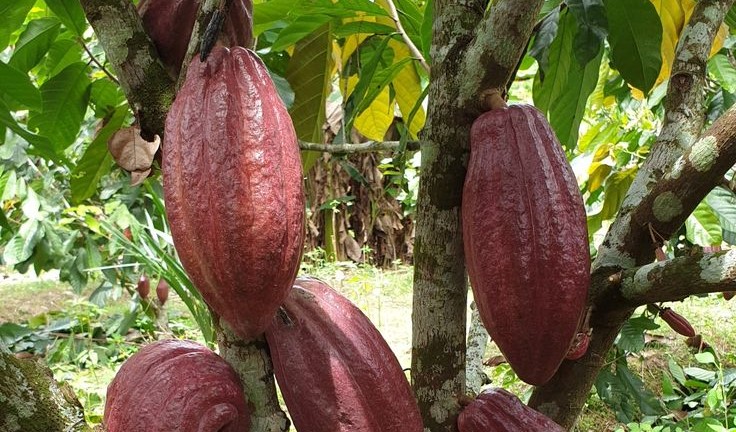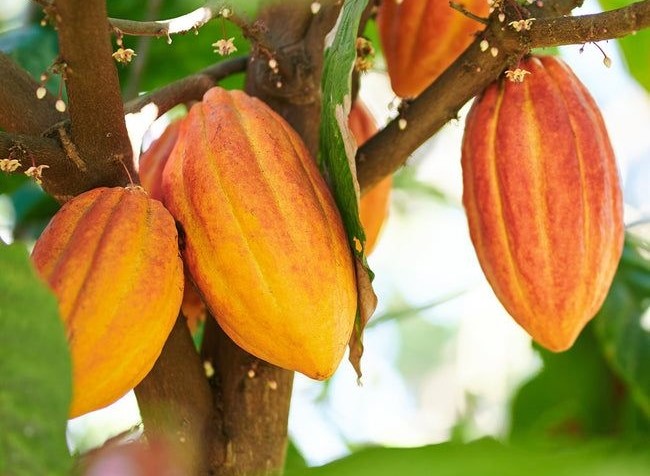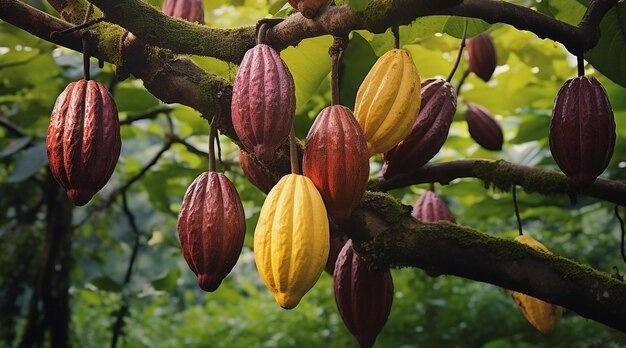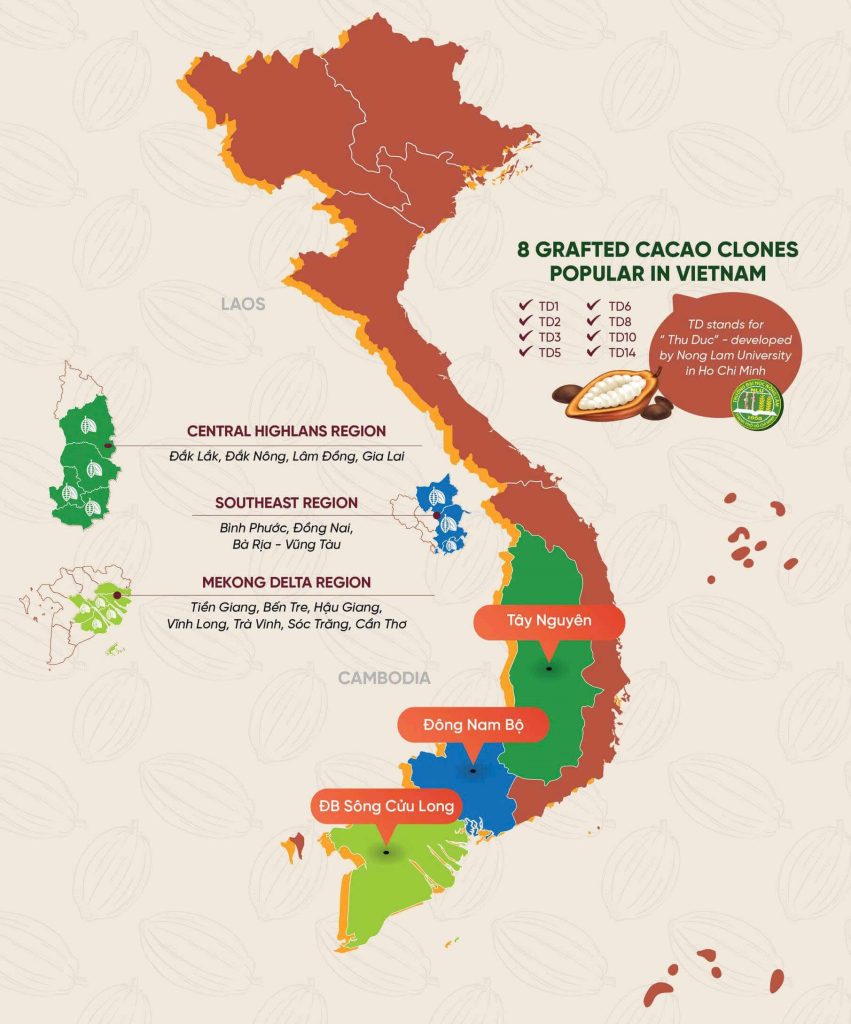Cacao varieties in Vietnam are gaining recognition worldwide as the country gradually marks its place on the global cacao map. Once associated mostly with South America or West Africa, cacao from provinces like Bến Tre, Đắk Lắk, and Bình Phước is now winning over international markets thanks to its distinctive flavor and stable quality.
At the heart of this recognition lies an essential factor: the cacao varieties cultivated in Vietnam. Each variety carries different flavor notes, characteristics, and climate adaptability, contributing to the unique identity of Vietnamese chocolate. This article explores the three main cacao varieties—Criollo, Forastero, and Trinitario—and the key growing regions across the country.
Overview of Cacao and Its Growth in Vietnam
Cacao was introduced to Vietnam by the French in the 19th century, but only in recent decades has it gained attention as a promising crop. Initial plantings took place in the Central Highlands and the Mekong Delta thanks to favorable tropical monsoon climate and fertile basalt soil.
Today, cacao is widely cultivated in Bến Tre, Đắk Lắk, Bình Phước, and Tiền Giang, with tens of thousands of hectares under production. Vietnamese cacao is now exported to Europe, Japan, and the United States—laying the foundation for a growing domestic chocolate industry.
Main Cacao Varieties in Vietnam
1. Criollo – The “Noble” Cacao
Criollo is considered the world’s rarest and most delicate cacao variety, accounting for less than 5% of global production. Criollo beans are lighter in color and, after fermentation, deliver gentle acidity, mild bitterness, natural sweetness, and refined aroma.
In Vietnam, Criollo is not widely grown due to its susceptibility to disease and low yield. However, regions capable of cultivating Criollo produce premium beans ideal for fine chocolate, making this variety highly prized among chocolate artisans and connoisseurs.

2. Forastero – The Most Common Global Variety
While Criollo is rare, Forastero represents more than 80% of the world’s cacao production. Its beans are deep purple with strong bitterness and pronounced cacao flavor. Forastero is widely used in mass-market chocolate for its robustness and consistency.
The variety thrives in Vietnam thanks to its high resistance to pests, strong adaptability, and stable productivity. As a result, many farming regions prioritize Forastero to ensure reliable supply for export and processing.

3. Trinitario – The Perfect Hybrid
Trinitario is a hybrid of Criollo and Forastero, first discovered in Trinidad. It combines Criollo’s fine aroma and flavor with Forastero’s vigor and resilience.
In Vietnam, Trinitario is considered a highly promising variety. It adapts well to local climate, and its balanced flavor profile makes it especially popular among bean-to-bar chocolate makers. Several Vietnamese chocolate brands rely heavily on Trinitario beans to craft high-quality products with a distinct local identity.

Major Cacao-Growing Regions in Vietnam
Central Highlands – Ideal Plateau for Cacao
The Central Highlands—including Đắk Lắk, Đắk Nông, Lâm Đồng, and Gia Lai—offer expansive basalt soil, cool temperatures, and evenly distributed rainfall. These conditions are perfect for long-day agricultural crops, including cacao.
Cacao from the Central Highlands often features strong flavor and deep aroma, making it ideal for premium chocolate production. Đắk Lắk currently leads the region in cacao cultivation, with Lâm Đồng and Gia Lai gradually expanding their areas to meet both domestic and export demand.
Southeast Region – Fertile Basalt Land
The Southeast—comprising Bình Phước, Đồng Nai, and Bà Rịa–Vũng Tàu—is famous for cashew, pepper, and rubber, but has recently seen cacao flourish thanks to rich basalt soils and tropical monsoon climate.
Beans grown here typically offer a balanced flavor with gentle acidity, making them a favorite among handcrafted chocolate producers. Bình Phước, in particular, is emerging as a high-quality cacao supplier with strong potential for expansion.
Mekong Delta – The Cacao Capital of Southern Vietnam
The Mekong Delta—including Tiền Giang, Bến Tre, Hậu Giang, Vĩnh Long, Trà Vinh, Sóc Trăng, and Cần Thơ—is one of Vietnam’s oldest cacao-growing areas. Bến Tre is often regarded as the region’s “cacao capital” due to its large cultivation area and consistent output.
With rich alluvial soil and mild climate, cacao here thrives, producing beans with gentle acidity, mild notes, and stable quality. These flavor characteristics make them ideal for bean-to-bar and artisanal chocolate.
Many households in the region rely on cacao as a sustainable income source, further strengthening the reputation of Vietnamese cacao both locally and internationally.

The Development Potential of Vietnamese Cacao
Although Vietnam’s cacao cultivation area is modest compared to major producers, its bean quality is increasingly recognized worldwide. Experts have praised cacao from Bến Tre, Đắk Lắk, and Bình Phước for their complex flavor profiles—ideal for premium chocolate.
Domestically, chocolate consumption is also rising, especially among younger consumers and tourists. This creates new opportunities for a high-value cacao industry in Vietnam.
The strategic combination of Forastero (for yield) and Trinitario (for quality) is currently the primary direction for sustainable cacao development. With proper investment, Vietnam has the potential to produce cacao that competes globally—not just as a raw agricultural product but as a cultural and gourmet symbol of Vietnamese craftsmanship.

